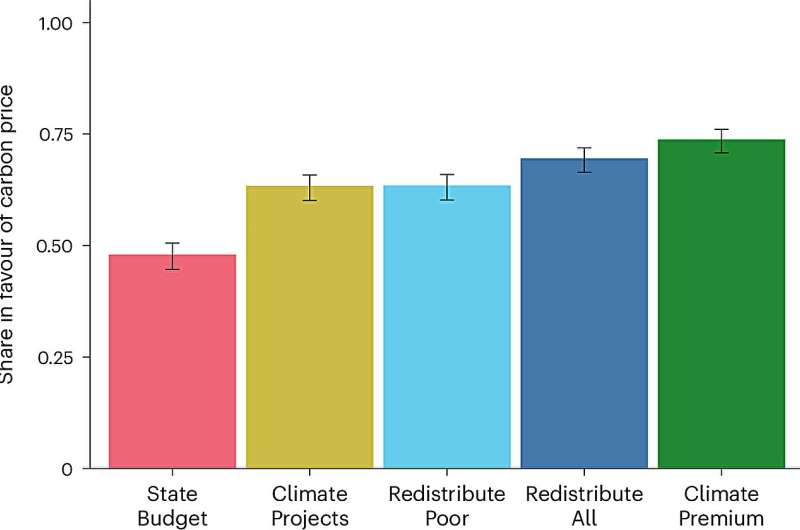
November 21, 2024 by Ludwig Maximilian University of Munich
Collected at: https://phys.org/news/2024-11-carbon-pricing-higher.html
Viewed by many experts as one of the most effective tools of climate policy, carbon pricing seeks to reduce carbon dioxide emissions. Currently, however, only 23% of global greenhouse gas emissions are subject to this climate tax, as it is seen as unpopular.
A study by LMU Munich, featuring a representative sample of 1,100 German citizens, shows that a majority of the German population would be willing to accept higher carbon prices. The key factor determining acceptance is how the corresponding revenues are used.
The study, which is published in the journal Nature Sustainability, also shows that the effect of carbon taxation on consumer decisions is underestimated.
“Carbon pricing is the sharpest blade in our economic toolkit against climate change,” says Professor Klaus M. Schmidt, chair of economic theory at LMU. “Our study shows that a clear majority would approve a model where the expected revenues are paid out equally and directly to citizens.”
Five different models of carbon pricing were investigated in the study. The most popular model was one where all citizens receive the same upfront sum equal to the expected carbon revenues. More than 73% of participants agreed to carbon pricing under these conditions. This was the “climate premium” model, as the researchers called it in their paper.
“The climate premium makes it very transparent how much money goes straight back into the pockets of citizens from the revenues generated by carbon pricing,” explains LMU researcher Klaus M. Schmidt. “The least popular model, by contrast, is when the revenues go into the general government budget.” Only 47.3% of study participants supported this model.
More information: Andrej Woerner et al, How to increase public support for carbon pricing with revenue recycling, Nature Sustainability (2024). DOI: 10.1038/s41893-024-01466-9
Journal information: Nature Sustainability

Leave a Reply